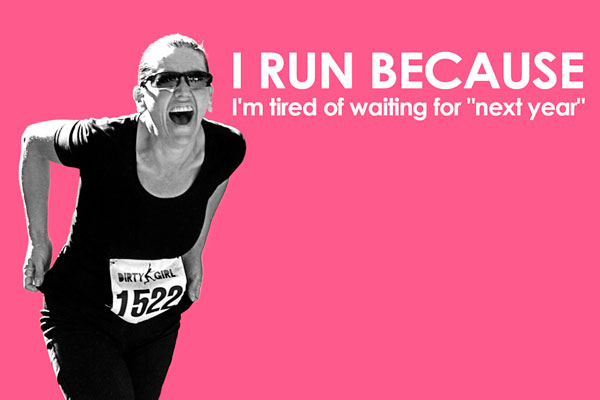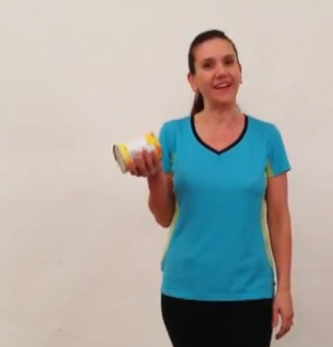Last updated on January 22nd, 2019 at 02:09 pm
Bones creaking, muscles aching, and that’s just getting out of bed in the morning.
Your fitness dreamer is no exception. Even I need to be able to get those muscles moving comfortably every day.
So here’s the question: Do we really need to stretch?
Stretching is the thing we will do next time, and we’ve survived this long putting it off this long, right?
This is a daily conversation with my fellow fitness challengers. When it comes to fitness or working out, there are a lot of opinions about when and how to stretch. The change in focus over the last few years has switched from stretching for flexibility to maintaining functional range of motion.
Functional range of motion keeps us doing everything we need to do every day.
I had the privilege of helping care for my Grandmother in her later years. She had a very sedentary lifestyle and she slowly lost her ability to care for herself. It was heartbreaking to see her decline but it reminds me to be thankful of the movement and health I have every day.
The reality of living with limitations in body motion effects basic self-care, balance and managing simple tasks around the house. It’s not something that magically happens when we turn a certain age. We lose range of motion just like eyesight; Slowly and without any warning.
About 10% of the nondisabled adult population aged 75 years and older lose independence in one or more basic activities of daily living (ADL) each year.
Source: Physical Therapy Journal, http://ptjournal.apta.org/content/80/6/556.full
For those of us who literally sit for a living recognize this every time we get up from a long working session. Straightening up can be a groaning experience.
Lower back fatigue, tight hamstrings and feeling like you aren’t sure you can stand up straight. Of course not taking enough breaks to get up and just move around adds to this issue. Some contributors may be the work environment we are in not being an ideal ergonomic set up.
Anyone who has used a laptop actually on their lap has experienced the hunch-back.
We can get up, workout, reach tall shelves (some of us with step stools) and get groceries from the car to the kitchen. We’re all set, right?
Watching out for tightening in any area of the body is the key to keeping the whole body upright and ready to go. There’s normal ranges we are shooting for, and anything less than that,
Here’s how to test your own functional range of motion
Neck
- Can you stand up straight with your hands on your hips and rotate your head, looking right to left?
- Are both sides equal?
- How about tucking your chin to your chest and looking down?
This is one place where my flexibility is bad. I look to the right, and my chin almost to my shoulder. I look left and it’s got a few inches to go. Tightness in my upper shoulder and neck stop my neck from being able to make that all the way over. Working on computers over twelve hours a day does not help.
Shoulders
- Can you lift your arm straight up from the front and the side?
- How about at a 45 degree angle across your body?
- How about my least favorite test: Make a fist with your thumb tucked in and reach one hand over your shoulder behind your back, and the other reaches behind and up from your waist.
Yep, I can reach all those directions. Does it count that I have a horrible grinding sound in my right shoulder while I do it? How about when my left shoulder pops when I lift to the side? Yeah. I did not think that was great. The motion is there but the joint health is something I am working on improving.
The reach behind test is horrible. One side I can at least get behind me, the other does not want to bend that way. Ugh.
Arms and hands
- Stand with your arms at their sides and bend your elbows to 90 degrees. Now rotate your hands so they are palm up, then palm down.
- Keep that 90 degree bend and try to rotate your arms in like your hugging yourself, and then out as far as you can.
- Can you bend your wrist down, up and side to side, while holding your arm straight in front of you?
The rotation and inward rotation is just fine for me so that means I haven’t tortured my elbows too much. The outward shoulder rotation feels like I’m pushing a rubber band past a breaking point, but I can almost make it to out to my sides.
Wrists aren’t equal for me but one was broken as a kid and the other has computer mouse related torture. What is normal for your wrist is 60 degrees up or down and between 20-30 degrees side to side.
Back
- Can you bend over so your back is at 90 degrees?
- How about bending backward or side to side?
This is not just about being able to touch your toes, but the ability to pick up stuff off the floor with enough mobility so you know you can get back up. Normal is bending forward at 90 degrees, and backward, or to either side, at 25 degrees. I know I have one of those grabber pick up things around here somewhere.
Hips
- Can you lie on your back and raise a leg to 90 degrees straight up?
- Now stand up and lift your straight leg behind you without banding forward. Try lifting out to the side, and crossing over in front of the other leg.
I know my hips are tight. My hamstrings have tightened from all the aforementioned sitting at computers. My lying hip flexion is barely 90 degrees, but the rest of the motion falls within normal, even if it does sound like an old barn door creaking open. We are shooting for the leg behind us at about 30 degrees, out to the side at 20 degrees and crossing over at 40 degrees.
Knees and feet
- How far can you bend your knee, bringing your foot toward your butt while standing?
- While sitting on the floor with your legs straight out in front of you, point your toes, and then flex your foot. How far does your ankle go in either direction?
Apparently normal range of motion is 150 degrees on that knee bend. I know my flexibility is not equal on both sides of my body, but it showed up here big time. My ankles seem to be on the same page, so I guess that’s something! Normal range for those ankles is 40 degrees when you point your toes and 20 degrees when you flex your foot.
You’ve got to move it, move it!
There are a million ways we can challenge ourselves to move and improve our ability to keep moving. What was the hardest range of motion tests for you to complete?
If you find you are tight in any these areas without a previous injury, or have any pain or any sensations that are off, please reach out to your doctor for help to get back to full range of motion. No one should have to live with painful joints.
Heather Montgomery
Go get your fit on
P.S. – I’ve got a surprise for you all next week when I share my next fitness challenge to improve my own range of motion.
Disclaimer: Ready to get fit? My goal is to share my experience with weight loss and fitness. I am not a professional trainer, nutritionist, or dietitian and all opinions are my own. This worked for me, but may not work for you, so please research what is best for your health and fitness goals.
[fbcomments]

Heather Montgomery is a fitness writer, triathlete, and serial entrepreneur who is devoted to sharing what she has learned about becoming a triathlete after age 40. She uses her Metabolic Training Certification to help other women struggling to get fit in mid-life. She lives and trains in Santa Rosa, California, the new home of the Ironman triathlon. You can find her biking the Sonoma County wine trails.
Note: Articles by Heather may contain affiliate links and will be compensated if you make a purchase after clicking on an affiliate link.





